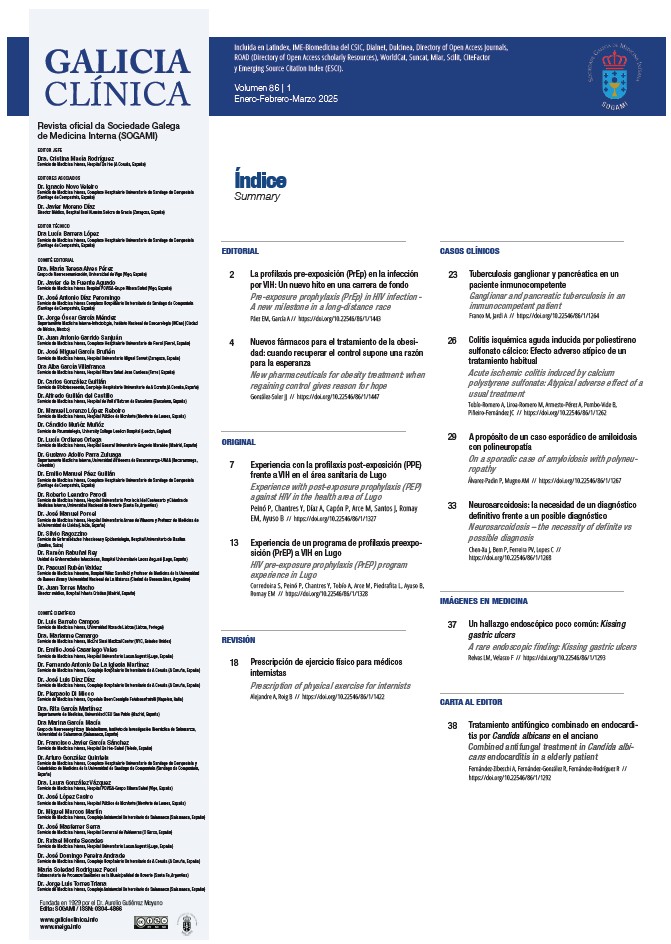Abstract
INTRODUCTION: HIV post-exposure prophylaxis (PEP) is a secondary prevention method with antiretroviral drugs after high-risk exposure in seronegative individuals.
OBJECTIVES: To know the characteristics of the users to whom PEP is administered in our center, degree of application, co-infection prophylaxis, drugs used, compliance and follow-up.
METHOD: Retrospective descriptive study of a series of users administered PEP in the Lugo health area from January 2013 to March 2024. Classification of patients by sex and mechanism of exposure. Results analysis by subgroups.
RESULTS: We included 83 users, most of them women, with a mean age of 29 years. The most frequent cause of PEP administration was sexual assault, but with differences between sexes. The initiation of PEP was considered adequate according to protocol in 51.8% and in half of them it was initiated in the emergency department. The rate of initiation, request for microbiological tests and initiation of empirical antibiotic therapy against sexually transmitted infections (STI) was higher when gynecology intervened. Although there were 11 seronegative sources or with undetectable viral load, only two prophylaxis were suspended. The most commonly used drug combination was Raltegravir combined with Emtricitabine/Tenofovir. No seroconversion occurred.
CONCLUSIONS: Management can be improved both in sample collection and treatment initiation. Compliance with recommendations is higher when gynecology is involved.

This work is licensed under a Creative Commons Attribution-NonCommercial-NoDerivatives 4.0 International License.
Copyright (c) 2025 Galicia Clínica


